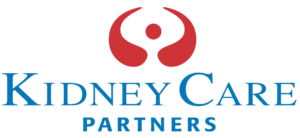National Kidney Foundation Statement on Medicare’s Final Dialysis Payment Rule
November 25, 2013
New York, NY – In response to the final rule issued on November 22, 2013 to update Medicare payment to dialysis providers, the National Kidney Foundation (NKF) is pleased that the Centers for Medicare & Medicaid Services (CMS) paid close attention to concerns raised by NKF, our constituents and others to lessen harm to patient access and quality of care by modifying its July proposal that would have cut dialysis payments by over 9% in 2014.
The final rule is an improvement over the proposal because average Medicare payments for dialysis in 2014 and 2015 will remain relatively unchanged. Unfortunately, the total cut is still about 9% from today’s rate, but will be phased in over 3-4 years. NKF is hopeful that the phased-in approach to dialysis payment cuts minimizes any immediate, negative impact on patients’ access to quality care, but NKF is still concerned about the long-term affect these cuts will have.
“Quality and access to dialysis care will need to be monitored in the face of these cuts. CMS has already put into place real-time monitoring of some patient outcomes since implementation of the End-Stage Renal Disease (ESRD) bundled payment system, and this will be an even greater need with the realization of these cuts. However, there are gaps in the current monitoring. Patients’ satisfaction and experience with their care is not measured,” said Bruce Skyer, Chief Executive Officer at the National Kidney Foundation.
Specific areas of concern include overcrowded facilities due to possible closures and consolidations, and over-burdened staff due to hiring freezes that reduce patients’ ability to access much-needed expert services such as nutritional counseling and social work. Additionally, cuts may result in providers offering fewer convenient treatment times due to consolidation. This may also hinder access to longer treatment times, which improves patient outcomes according to recent research.
“If reimbursement cuts result in less flexibility for patients to schedule in-center dialysis, it could present an opportunity for an increase in home dialysis and a greater patient demand for this modality. While the final payment rule increased the training payment for home dialysis by 50%, facilities may still have fewer resources to invest in the upfront staffing, training, equipment and physical space dedicated to training patients for home dialysis,” continued Skyer.
“We are disappointed that the cuts were not reversed, but are satisfied with the phased implementation. I believe the lessened impact of the cuts was due to the voice of patients and I thank NKF’s patient constituency and those of our professional members who are on the front lines caring for dialysis patients for their work in reaching out to lawmakers. However our work is not over, and we will continue to make sure kidney patients have access to the care and treatments they need,” said Skyer.
The National Kidney Foundation is the leading organization in the U.S. dedicated to the awareness, prevention and treatment of kidney disease for hundreds of thousands of healthcare professionals, millions of patients and their families, and tens of millions of Americans at risk. For more information, visit www.kidney.org.
